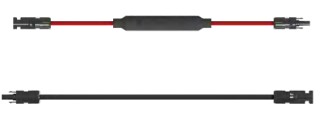
Navigating the intricate landscape of electrical components, professionals often come across tools and devices that, while not as famous as their larger counterparts, play an integral role in ensuring safety and efficiency. Among such devices, fused jumpers emerge as essential components. In this article, we’ll explore what they are, their applications, and the advantages they bring over non-fused jumpers.
What is a Fused Jumper?
Simply put, fused jumpers are short conductive wires that come equipped with a fuse. Engineers primarily use these tools to bridge connections between two points within an electrical circuit. The included fuse acts as a protective mechanism, ensuring that in the event of a surge or overload, the fuse will blow, safeguarding the equipment and preventing potential hazards.
Applications of Fused Jumpers
- Protection in Test Scenarios: Engineers and technicians use them when testing circuits. They provide an additional layer of safety against unforeseen electrical surges.
- Temporary Circuit Connections: For temporary projects or when permanent connections are being repaired, fused jumpers offer a secure and safe connection alternative.
- Circuit Flexibility: In scenarios where circuit modifications are frequent, these jumpers can provide an easy means to reconfigure without major overhauls.
Fused vs. Non-Fused Jumpers
Choosing between fused and non-fused jumpers boils down to the application’s safety requirements. A non-fused jumper simply bridges a connection, offering no protection against overcurrent or short circuits. In contrast, a fused jumper, with its built-in protective mechanism, breaks the connection when it detects a fault, preventing potential equipment damage or fires.
For applications where the risk of electrical anomalies is higher, or where the equipment is sensitive and expensive, opting for a fused jumper is a wise choice, providing an extra layer of security.
Different Types of Fused Jumpers and Their Uses
- Blade: These come equipped with blade fuses, which are commonly found in automotive applications. They’re ideal for testing in vehicle circuits.
- Glass: Incorporating cylindrical glass fuses, these jumpers offer a clear view of the fuse’s filament, making it easy to identify when a fuse has blown. Engineers often use them in electronics testing.
- Resettable: Unlike traditional jumpers which require fuse replacement after blowing, these come with a resettable fuse. They find use in scenarios where overcurrent events are frequent but not indicative of system faults, such as in certain research setups.
In Conclusion
Fused jumpers, while small in stature, play a substantial role in ensuring the safety and adaptability of various electrical setups. When engineers integrate a protective fuse into a simple jumper, they reduce risks and make it easier to manage and modify circuits. As we continue to push the boundaries of electrical applications, the importance of these tools, which ensure safety without compromising on flexibility, will only grow.

